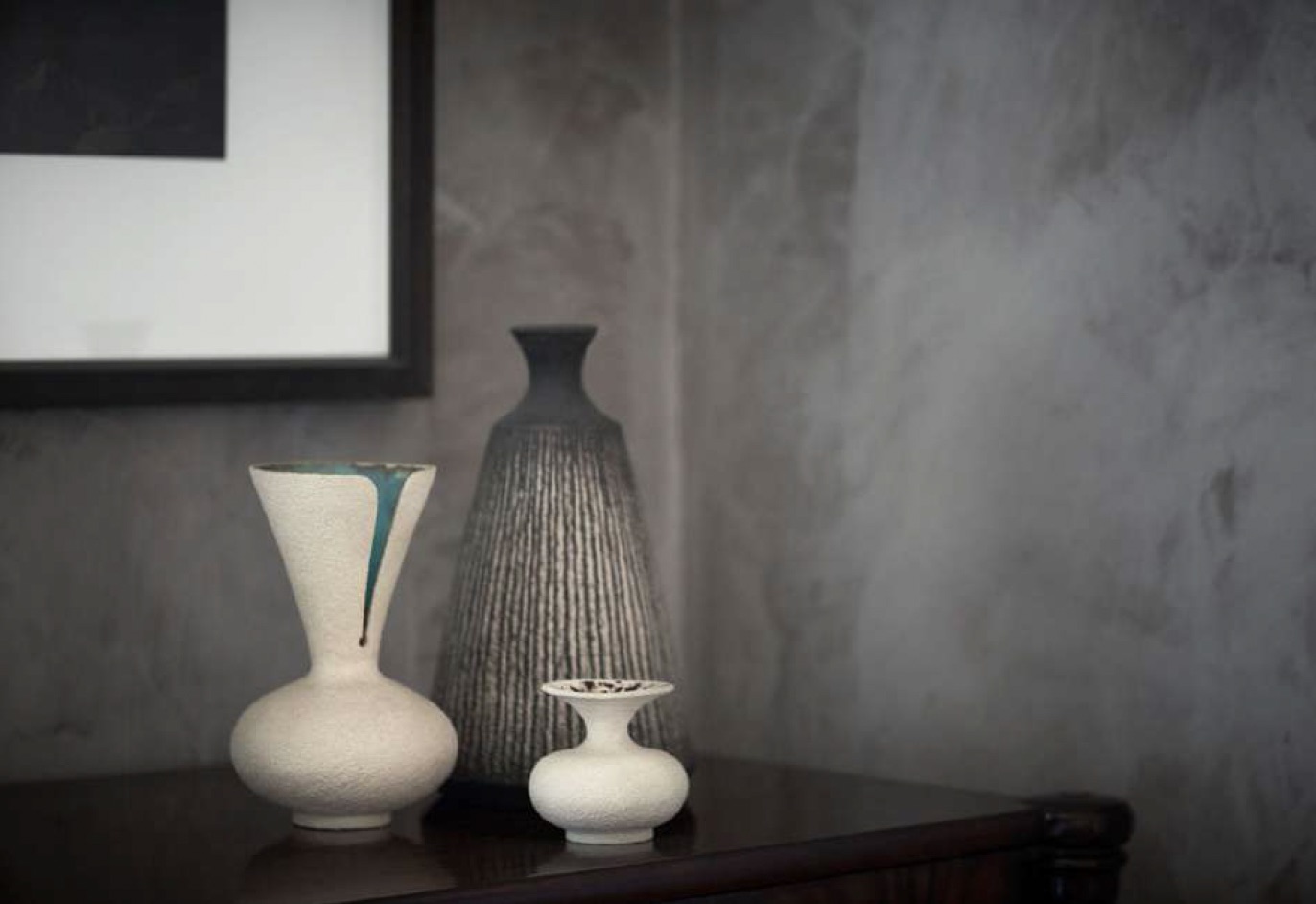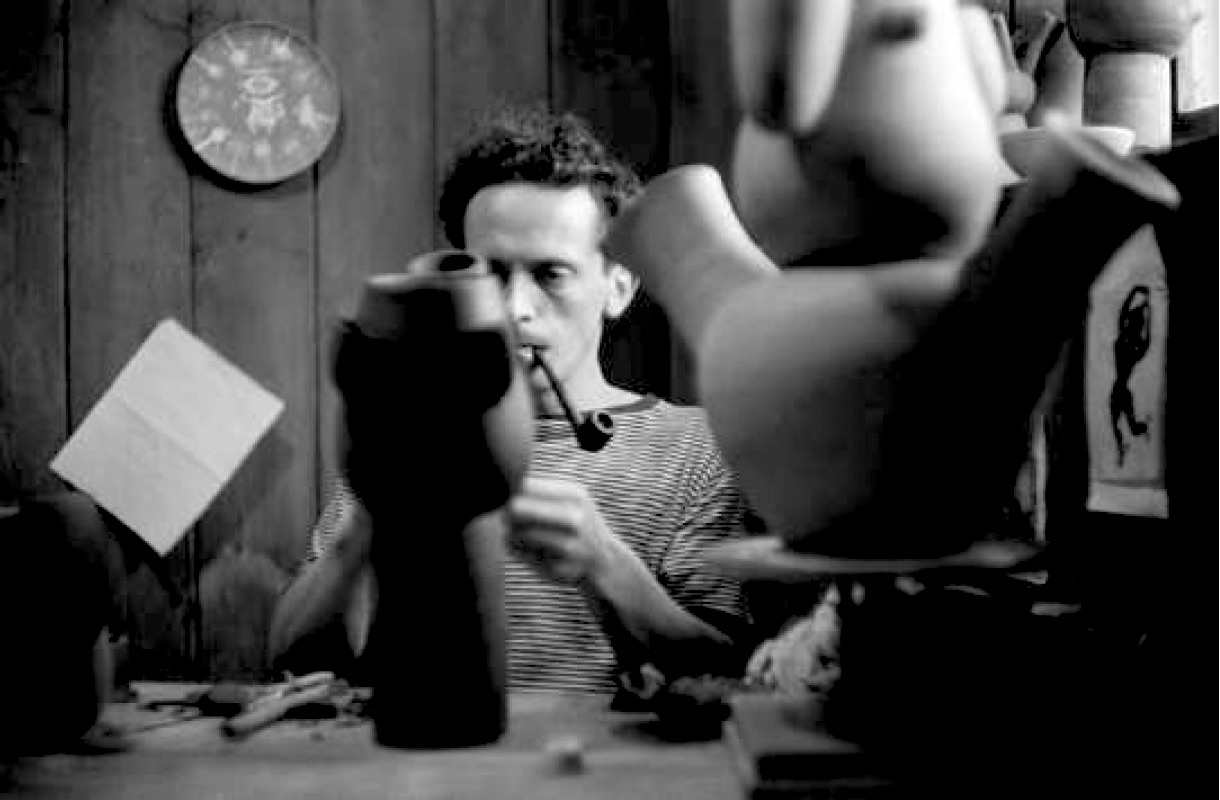Waistel Cooper exhibition in London and Edinburgh
 The Fine Art Society held the first two of four exhibitions to celebrate British artist-potter Waistel Cooper (1921-2003) and his body of work in January and February this year. The exhibitions were held concurrently in Edinburgh and London and the second half of the retrospective will also be on view in both galleries, opening from the September 27 until the November 4, 2022.
The Fine Art Society held the first two of four exhibitions to celebrate British artist-potter Waistel Cooper (1921-2003) and his body of work in January and February this year. The exhibitions were held concurrently in Edinburgh and London and the second half of the retrospective will also be on view in both galleries, opening from the September 27 until the November 4, 2022.

Last year marked the centenary of Cooper’s birth. He was a major force in the evolution of ceramics, leading the way in the 1950s for his friends and contemporaries, Hans Coper and Lucie Rie, to overturn expected potting aesthetics: eschewing elaborately decorated Victorian pots in favour of pure forms and rough, textured, sculptural pieces.
It was Cooper who scored a one-man show at Henry Rothschild’s prestigious Primavera Gallery in the 1950s, while Rie and Coper exhibited there in mixed exhibitions, making ends meet producing buttons and homewares, wondering in a letter to Cooper how he managed to follow his own path. Were it not for Cooper’s reticent nature – which ultimately led to his living in the seclusion of the Culbone woods in Exmoor – he would be better known today, and undoubtedly would claim the mid-century potting crown.
The extraordinary range of ceramics in the Fine Art Society’s exhibition come from the family of a close friend of Waistel Cooper, and they offer a unique opportunity to appreciate this brilliant potter’s vision and skill, with the benefit of hindsight and historical context. His visionary experiments with form and texture captured the zeitgeist of post-war modern Britain.

Exhibitions of his work were held in Reykjavik, Bristol, London and Edinburgh throughout the 1960s and 1970s. In 1961, an important show was held at the Scottish Crafts Centre in Edinburgh, held during the Edinburgh Festival, which resulted in many purchases by leading Scottish museums, such as Glasgow, Edinburgh, Paisley and Dundee.
He then lived almost as a reclusive, but 1994 saw a resurgence of interest in Waistel’s work with his retrospective at Manchester City Art Gallery which motivated Waitsel to start exhibiting again. Since his death in 2003, Waistel Cooper has faded into near obscurity. The four exhibitions this year endeavour to secure his position as one of the leading artists in the post-war revolution in ceramics.
The Fine Art Society was fortunate enough to have the opportunity to acquire a large single owner collection of his ceramics in 2021 which perfectly represents his body of work, with over one hundred pieces dating from the 1950s through to his final years. They were amassed by a resourceful young woman based in Edinburgh, who by chance had met the artist in 1956, when he visited her ‘chippy’, and invited her along to his Edinburgh Festival exhibition. She became a life-long friend and collector of Waistel’s pots, and her daughter, who also knew the potter well, continued to add to the collection.
Now, with this unique overview of the artist’s output, The Fine Art Society said it is time to reconsider Cooper’s place in the pantheon of great British artists.
A short biography of Waistel Cooper
Waistel was born in Ayr on the west coast of Scotland in 1921. In his early years, Waistel attended the Ayr Academy, a traditional school with a
strong art department. He then went on to attend the Hospitalfield College of Art in Arbroath, where he stayed for two years. Here Cooper had the opportunity to study alongside many up-and-coming young artists of the day. He became good friends with Robert Colquhoun and Robert MacBryde, who would achieve a certain notoriety after the war for their anti-establishment behaviour.
 In the 1930s, Cooper was becoming aware of the important new developments in contemporary British sculpture, such as the organic work of Henry Moore and Barbara Hepworth.
In the 1930s, Cooper was becoming aware of the important new developments in contemporary British sculpture, such as the organic work of Henry Moore and Barbara Hepworth.
In 1939, he was awarded a scholarship to Edinburgh College of Art, although his studies were soon interrupted by the war. In 1941 he was invalided out of the Army, and in 1943 he resumed his studies in Edinburgh, where he first experimented with pottery in 1945.
He relocated to London where he shared a house with the Icelandic art historian Björn Theordor Björnsson.
By 1946, he moved to Reykjavik where he was offered a teaching position. Together with the Icelandic artist Gesture Thorgrimsson he built a kiln and prospected for clay, making earthenware pots decorated with coloured slips. Their pottery would become known as ‘Laugarnesleir’, its aesthetic values of form and colour inspired by Inca, Aztec and Mayan pottery, fused with elements of European abstract art.
In 1950, he returned to the UK and Henry Rothschild, the owner of Primavera – an influential gallery – began to stock Waistel’s work. In 1954 some of these were featured in the first exhibition of contemporary British studio ceramics en masse: ‘Engelse Keramiek’, at the Stedelijk Museum, Amsterdam.
In 1955, he held a solo exhibition at Primavera and further success came via the Department Stores, Liberty’s, Dunn’s of Bromley, and Heal’s. In 1959 he was included in the British Artist Craftsmen exhibition organised by the Council of Industrial Design and the Smithsonian, where his pottery was shown alongside works by Barbara Hepworth, Henry Moore, John Piper, Sir Jacob Epstein, Ben Nicholson, Elizabeth Frink and Graham Sutherland. At this time, he was living in Porlock, in a lodge isolated and surrounded by woodland, not easily accessed by vehicle. Here Waistel, inspired by flora and fauna, introduced fungi and other forms to his pottery.
The 1960s were his most successful period. His pottery had a clear and distinctive voice; a rough surface texture, earthy organic tones, ribbed, patterned or incised with glazed interiors. His later pieces when he was living and working in Penzance, Cornwall, became even more abstract. His earthy woodland tones were exchanged for rough white and grey textures with azure blue interior glazes, and he produced monumental carved abstract sculptures of organic interlocking forms.

